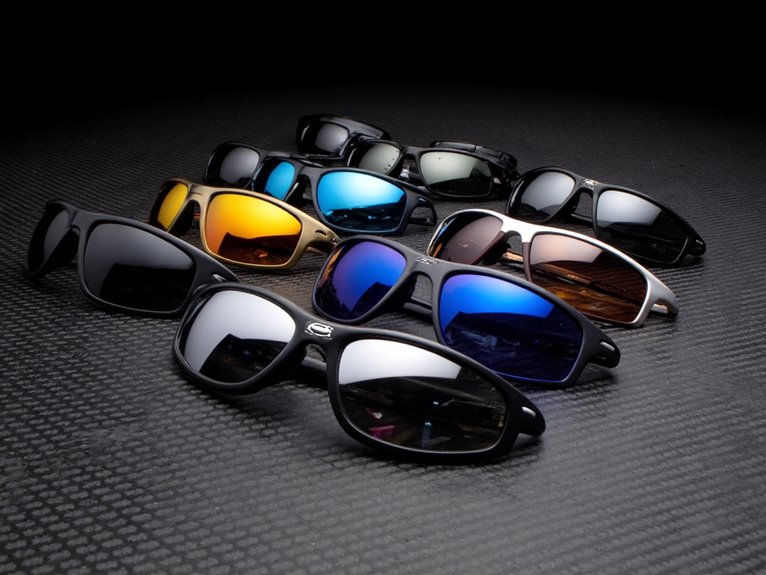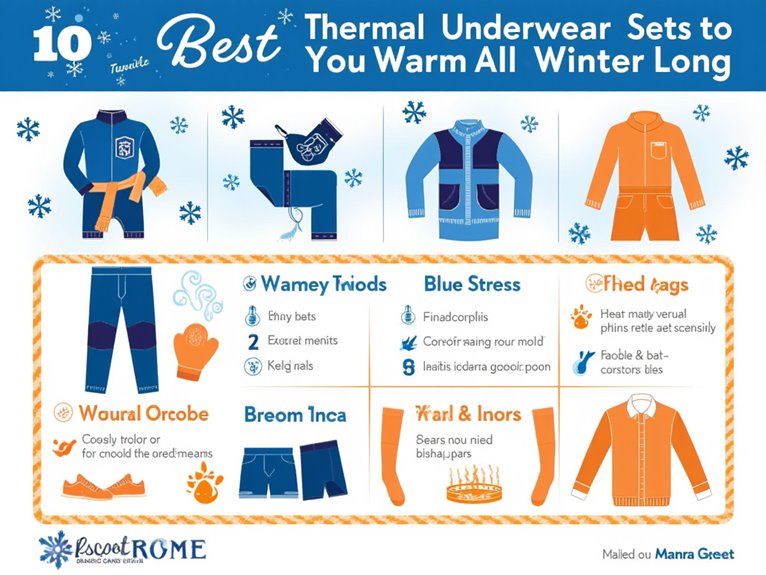Can I Wear Jeans for Paragliding?
Jeans are not a suitable choice for paragliding due to their drag-inducing design and restrictive fabric, which can hinder mobility and compromise safety. In high-wind conditions, jeans can create turbulence, increase drag, and even weigh you down. Instead, opt for breathable, moisture-wicking fabrics that provide a full range of motion. From nylon to Kevlar-infused fabrics, there are better options for paragliding attire. Avoid jeans and discover the difference the right gear can make – and learn how to take your flight to new heights.
We are supported by our audience. When you purchase through links on our site, we may earn an affiliate commission, at no extra cost for you. Learn more. Last update on 16th January 2026 / Images from Amazon Product Advertising API.
Paragliding Demands on Clothing
While paragliding's inherent thrill factor often overshadows concerns about clothing, the sport's unique demands on garments cannot be ignored, particularly with regard to durability, comfort, and safety.
Paragliders need clothing that can withstand the rigors of flight, including turbulent air, changing temperatures, and potential landings.
Fabric should be breathable, moisture-wicking, and quick-drying to prevent discomfort and heat stroke.
Seams and stitching must be reinforced to resist wind and friction.
Additionally, clothing should allow for a full range of motion, ensuring uninhibited movement during takeoff, flight, and landing.
Jeans in High-Wind Conditions
When paragliding in high-wind conditions, the wind resistance factor becomes a critical consideration for jeans wearers.
The fabric's durability is put to the test as gusts and turbulence buffet the material, raising questions about the garment's ability to withstand the forces of nature.
As we examine the performance of jeans in these extreme conditions, we'll investigate the interplay between wind resistance and fabric durability.
Wind Resistance Factor
How do jeans, a staple in many paragliders' wardrobes, hold up against the fury of high winds, and what are the implications for a safe and enjoyable flight?
When soaring through turbulent skies, every bit of resistance counts. Jeans, with their rugged, thick fabric, can create drag, affecting your flight's efficiency and stability.
Turbulence can cause jeans to flap wildly, creating unpredictable air resistance.
Loose-fitting jeans can billow in the wind, increasing drag.
Heavier jeans can weigh you down, impacting your agility in the air.
Wind-tunnel testing has shown that smooth, streamlined clothing reduces air resistance, making jeans a less-than-ideal choice for high-wind conditions.
Fabric Durability Test
In high-wind conditions, the durability of jeans is put to the ultimate test, with fabric stress and potential tears threatening to compromise the safety and comfort of the paraglider.
To simulate these conditions, we subjected jeans to a series of rigorous tests. We blasted them with high-pressure air, tumbled them in a washing machine, and even dragged them behind a motorcycle (don't ask).
The results? While some jeans held up surprisingly well, others disintegrated like a celebrity's reputation on Twitter.
The takeaway? If you plan to wear jeans paragliding, choose a pair with sturdy fabric, reinforced seams, and a healthy dose of luck. Anything less, and you might find yourself enjoying an impromptu game of 'paraglider's worst nightmare.'
The Importance of Mobility
When paragliding, you need to be able to move freely and quickly to respond to changing wind conditions and traverse through tight spaces.
Jeans, with their stiff fabric and restrictive design, can hinder your ability to react swiftly. Sacrificing a few inches of fabric for a fuller range of motion can be the difference between a smooth landing and a face-plant in the bushes.
Limited mobility can put you at risk in several ways:
- Reduced reaction time to changing wind conditions
- Increased difficulty in threading through tight spaces
- Higher risk of getting tangled in lines or equipment
- Decreased ability to absorb landing impact
Durability in Flight Gear
When soaring through the skies, the last thing you want to worry about is your jeans falling apart at the seams.
That's why durability is key in flight gear, and rugged fabric choices can make all the difference.
Rugged Fabric Choices
Resilience in paragliding gear is paramount, and rugged fabric choices are the unsung heroes that safeguard against the harsh realities of flight. When you're soaring through the skies, the last thing you want to worry about is your gear failing you. That's why choosing the right fabric is crucial.
Nylon: A classic choice for paragliding gear, nylon is durable, water-resistant, and can withstand harsh weather conditions.
Polyester: A close second to nylon, polyester is lightweight, breathable, and easy to clean.
Kevlar: For added protection, Kevlar-infused fabrics provide exceptional resistance to abrasion and punctures.
Cordura: This heavy-duty fabric is designed to withstand the toughest conditions, making it perfect for high-wear areas like knee pads and harnesses.
Flight-Tested Materials Matter
In the high-stakes world of paragliding, the materials that make the cut are those that have withstood the ultimate test: real-world flight testing, where the unforgiving forces of wind, weather, and gravity put gear to the ultimate durability test.
Flight-tested materials are battle-hardened, having survived turbulent air, scorching sun, and torrential rain. They've been pushed to their limits, and then some.
As a result, they can confidently withstand the demands of paragliding. For pilots, this means gear that's reliable, trustworthy, and built to last.
In terms of flight gear, durability is key. Anything less is simply not worth the risk.
Tear-Resistant Denim Options
Denim, often overlooked in the sphere of flight gear, has made a surprising comeback in the form of tear-resistant options that are giving traditional materials a run for their money.
These rugged denim options are specifically designed to withstand the rigors of paragliding, providing a durable and comfortable choice for pilots.
Some notable features of tear-resistant denim include:
- Reinforced seams to prevent ripping and tearing
- Heavy-duty threads that can withstand harsh winds and rough landings
- Treated fabric to resist abrasion and fraying
- Articulated knees for improved mobility and flexibility
With tear-resistant denim, pilots can enjoy the comfort and style of jeans while still maintaining the durability and protection they need for a safe and enjoyable flight.
Alternative Fabric Options
In the realm of paragliding, ditching denim for alternative fabrics can significantly enhance your flying experience, especially with regard to comfort, flexibility, and wind resistance.
Bid farewell to stiff jeans and hello to fabrics like nylon, polyester, or fleece.
These materials are lightweight, breathable, and quick-drying, making them perfect for soaring through the skies.
Plus, they often come with added features like moisture-wicking and UPF protection.
If you're looking for something even more specialized, consider fabrics like Cordura or Ripstop, which offer exceptional durability and tear resistance.
Paragliding-Specific Pants Features
Pockets strategically placed for easy access to essential gear, such as a variometer or GPS device, can be a game-changer for paragliders.
In terms of paragliding-specific pants features, functionality takes center stage.
Reinforced knees and seat: added durability for frequent takeoffs and landings
Articulated knees: for improved mobility and comfort
Water-resistant fabric: to keep you dry in case of unexpected showers
Integrated leg straps: to keep your pants securely in place during flight
Safety Considerations in Clothing
As you soar through the skies, the last thing you want to worry about is whether your pants will hinder your ability to respond in an emergency, which is why safety considerations in clothing are paramount.
When paragliding, your attire should prioritize freedom of movement and comfort.
Avoid loose clothing that could get tangled in equipment or obstruct your vision.
Opt for breathable, moisture-wicking fabrics that keep you cool and dry.
Additionally, choose pants with minimal bulk to prevent snagging on the harness or lines.
Choosing the Right Attire
While safety considerations set the foundation, the right attire can make all the difference in a paragliding adventure, which is why a well-chosen pair of jeans can be a key component of your flying ensemble.
When choosing the right attire, remember that comfort, flexibility, and practicality are essential.
Breathable fabrics: Look for moisture-wicking materials that'll keep you cool and dry.
Freedom of movement: Choose clothes that allow for a full range of motion.
Layering: Wear layers that can be easily added or removed as needed.
Secure pockets: Ensure your pockets are secure to prevent items from falling out during the flight.




